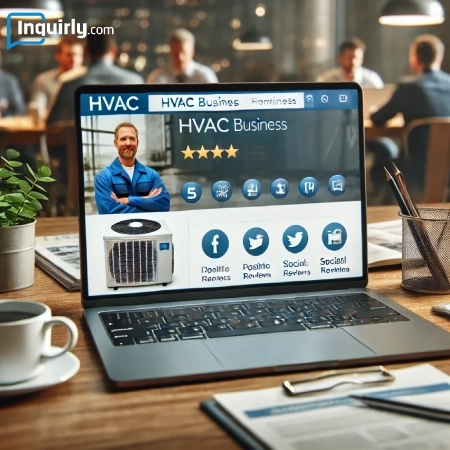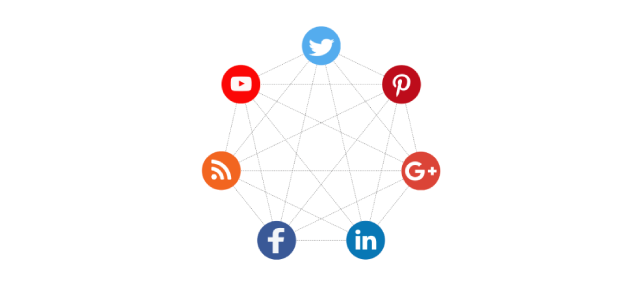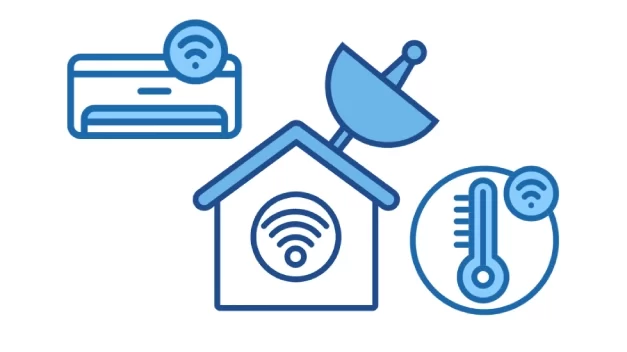Ever feel like your HVAC marketing efforts are all over the place, and disorganized? What if you could keep one step ahead, guaranteeing that your services are front and center exactly when your customers need them most? The way to achieve this is to use a strategic marketing calendar. This tool is more than simply a calendar. A strategic marketing calendar is about turning your marketing into an organized method that produces consistent results all year around.
Let’s get a more detailed understanding of what is a marketing calendar and why is it important. For that, we need to break down its components and see how it can streamline your marketing efforts.
So, what is a marketing calendar?

A marketing calendar is a detailed schedule that outlines all your planned marketing activities over a set period, usually a year. A well-maintained calendar ensures that your marketing efforts are timely, coordinated and effective, reducing last-minute stress and improving overall results.
In other words, by laying out your campaigns, promotions, content and other marketing initiatives in advance, you can coordinate your efforts across different channels and make sure your message reaches the right audience at the right time.
5 Easy Steps to Create an HVAC Marketing Calendar
Although the process of creating an HVAC marketing calendar may seem overwhelming, it can be made simple and efficient by dividing it down into manageable steps.
1. Identify Key Timings
The first step in creating your marketing calendar is understanding when your HVAC services are most needed. For example, demand for air conditioning services is highest in late spring and early summer, whereas late autumn and winter are the busiest times for heating services. Identifying these seasonal tendencies allows you to tailor your marketing efforts to align with times when your clients are actively seeking your services.
Beyond the general seasons, think about specific dates that may influence your customers’ behavior. This could include holidays, community celebrations, or specific events. For example, you could run a special promotion around a national holiday. By marking these dates on your calendar, you can guarantee that your marketing campaigns are current and relevant.
2. Set Goals
Before you begin organizing particular campaigns, you must first set your goals. Are you looking to raise brand awareness or generate more leads? Clear objectives will direct the focus of your marketing activities and ensure that they are consistent with your overall business goals.
Once your objectives are set, align them with the seasons you identified earlier. Write down specific, measurable goals for each season to keep your efforts focused and track your progress.
3. Craft the Content
Start brainstorming the types of content that will best interest your target audience. Determine what information or offers will be most useful to your clients at various periods of the year. Write related blog posts, create social media posts with maintenance recommendations, or design email campaigns to promote seasonal discounts.
Right after brainstorming is done, it’s time to put your content ideas into a calendar. Set particular publishing dates for each piece of content, whether it’s a blog post, social media update, or email.
4. Schedule your activities
- First of all, choose the calendar tool that best meets your needs. Google Calendar is simple and effective, whereas Trello and Asana provide more extensive task management and collaboration options. Create a calendar that covers at least six months to a year so you can see your marketing strategy across a longer time frame.
- The next step is to enter all your planned activities into the calendar. Include the dates when content will be published, deadlines for content creation, approvals and any other tasks needed to bring your campaigns to life.
- If you have a team, assign defined duties to each individual. Assigning duties ensures that everyone understands what they need to do and when which helps to keep your campaigns on track.
5. Track Performance
Maintaining your HVAC marketing calendar demands consistent effort. Schedule regular check-ins, monthly or quarterly, to review campaign performance and make any necessary changes. This information will help you understand what is working and where there is an opportunity for improvement. Use tools like Google Analytics or social media insights to measure the success of your campaigns.
.
Additional Tools

Google Calendar
A simple tool for scheduling and visualizing your marketing activities.
Tip: use color-coding to differentiate between various marketing activities. Set reminders a few days before each deadline to ensure nothing falls between the gaps.
Website: https://calendar.google.com
Trello or Asana
Great for managing tasks and collaborating with team members.
Tip: create individual boards or projects for each marketing campaign. Use cards or tasks on each board to track content development, approval, and publication progress. To ensure that everyone is on the same page, assign specified duties to team members and set deadlines.
Website: https://trello.com ; https://asana.com
Canva
An easy-to-use design tool for creating visually appealing graphics for your campaigns.
Tip: design consistent branding elements and save templates to rapidly generate new material that matches your brand’s style and tone.
Website: https://www.canva.com
Mailchimp
Perfect for creating and sending email marketing campaigns.
Tip: segment your email list and use A/B testing to learn which subject lines and content work best.
Website: https://mailchimp.com
Conclusion
As we have already mentioned, creating an HVAC marketing calendar is an important step in ensuring that your marketing attempts are strategic and effective. By following these steps above with a combination of the right tools, you can plan and execute your campaigns with confidence. Don’t forget to regular updates, it will make you responsive to changes in the market.
Questions You Might Ask
What’s the best way to coordinate a marketing calendar with my sales team?
Share the marketing calendar with your sales team during meetings or via a shared platform like Trello or Google Calendar and and align campaigns with sales targets.
How can I integrate my marketing calendar with my CRM system?
Use CRM software that supports calendar integration or allows for campaign tracking, such as HubSpot or Salesforce. Sync your marketing calendar with the CRM to automate follow-ups and track campaign impact.
What should I do if my campaigns aren’t performing as expected?
Analyze the campaign metrics to identify areas of weakness, such as low engagement or poor conversion rates. Adjust your messaging, try different channels, or optimize your targeting.

























